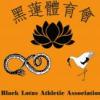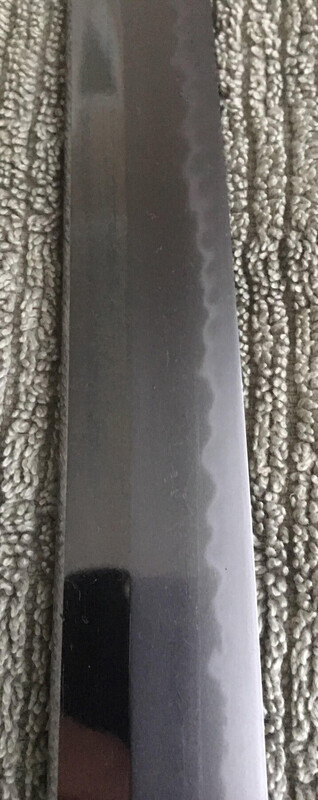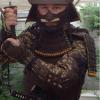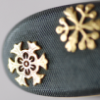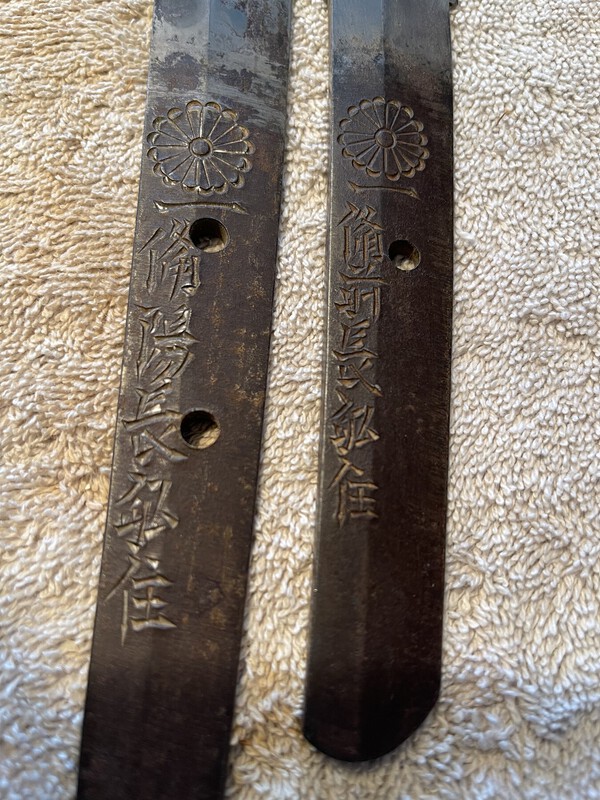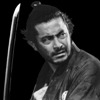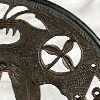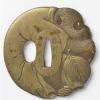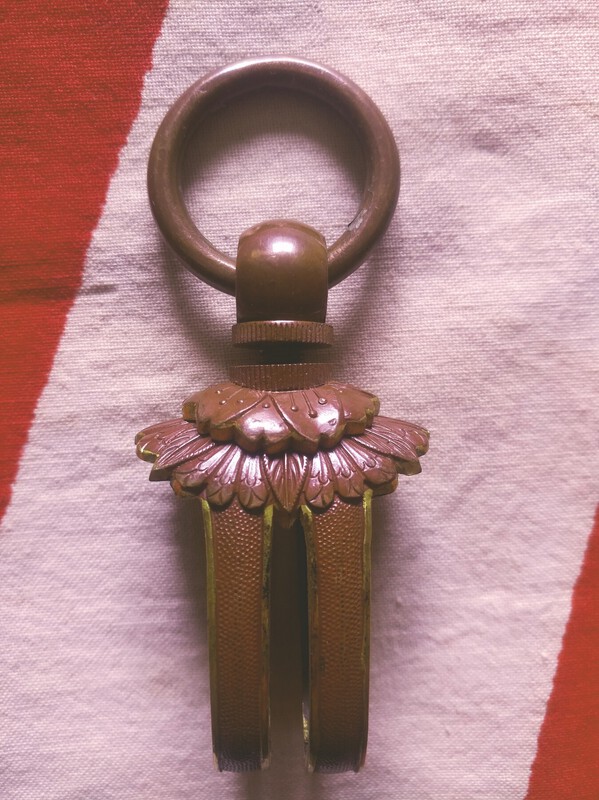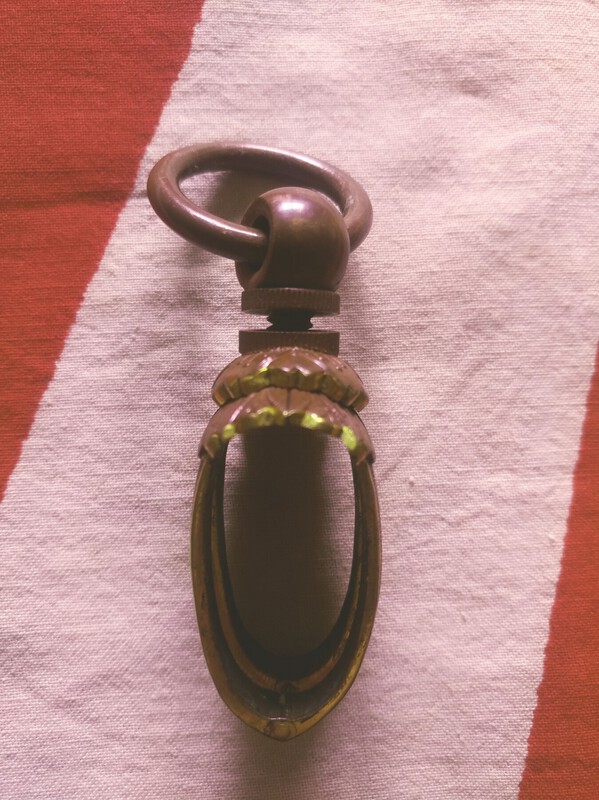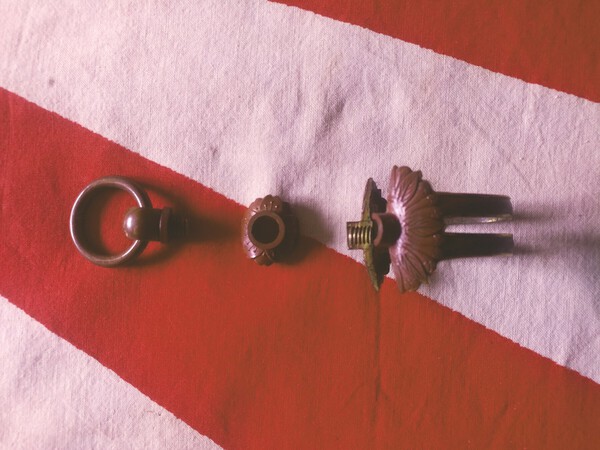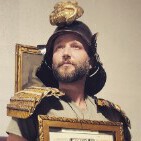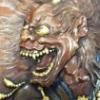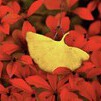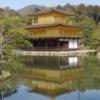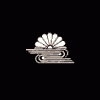Leaderboard
Popular Content
Showing content with the highest reputation on 05/04/2021 in all areas
-
5 points
-
AHi all. My Minelab GPX5000 will sound off on any metal with a very similar tone. There is no real effective discrimination on the 5000. My Garrett GT2500 will sound off like precious metals on larger pieces of steel, ie horse shoes, sheet iron etc. The larger pieces of iron overload the discrimination circuitry of the coin machines and they get confused. Smaller pieces of steel/iron don’t show up on the GT2500.3 points
-
There is no doubt that early Mantetsu swords exhibit HADA, fine grained it may be, but definitely there. I have some. Some of them even had wavy HAMON. The steel used in a Mantetsu sword was made in an electric furnace, not the traditional TATARA. An electric furnace is just another way of providing heat to the raw materials. As you all know, the iron/steel used in a sword made from TAMAHAGANE never melts, it is made into a sponge, full of impurities, and gases. Repeated heating, hammering and folding remove the un-wanted impurities. So one could assume that at least in the early production of Mantetsu, the metallurgists were trying to reproduce a TAMAHAGANE like material, or steel sponge in the electric furnace. Using the high-speed power machine tools of the time, this sponge could be quickly turned into a many times folded homogeneous piece of steel. This folded hot steel could then be hot sheared, and the center pierced into "hockey puck" like pieces or donuts. So, it is commonly assumed that the softer iron core was inserted into the outer skin steel, some liken it to a rod inserted into a pipe. The longer the pipe the greater the probability of voids and discontinuities exist on forge welding, so a shorter "pipe and rod" system would guarantee no forging faults. In the sword forging process, this billet would be drawn out and lengthened by repeated heating and hammering into the sword shape. It is feasible that the Mantetsu steel pucks were made in Manchuria and distributed to sword makers in many localities, like boxes of donuts, but with a core of soft iron. Getting some Mantetsu swords, cutting and sectioning them would confirm their production methodology. So in summary, you have to assume that the above method would lend itself to mass production, ease of production, and a consistent product. The very rough sketch below is an attempt to show how a shorter pipe and core would have many production, manufacturing and quality benefits over a long thin difficult to make pipe.3 points
-
2 points
-
Hi Bob, I think that kozuka might refer to the Otter Festival. Dassai Ki 獺祭忌(だっさいき)Dassai memorial day - Otter Festival Anniversary Dassai 獺祭 is a name of the Otter Festival, also an ancient name of part of the prefecture Yamaguchi. Fishotters catch fish and place them on the riverside, almost as if they wanted to show them as offerings. This custom has been the subject of many old poems.2 points
-
Neil, according to the author (Ohmura San) they did, but he didn’t attach the picture. However, he says the the micro photographs did prove that the welding between the shingane and Karaganda was absolutely perfect. This is why I call those swords the best that there are. They may not be traditional but with a modern technique, they succeeded in doing what the swordsmiths had tried to achieve. In a way, this is the best you can do with a sword.2 points
-
2 points
-
Mark, Leeds is not Tokyo, so you should be fine oiling your blades only once in a few months. I live in a similar climate and I don't oil my swords at all. I have never had a problem with rust. They are all in shirasaya, of course.2 points
-
2 points
-
2 points
-
Item No.36 A Kozuka in pale shibuichi , with copper and shakudo , gold and silver details and inlays. Subject of an otter with a captured catfish , next to a stream with bank and sluice gate ( ? ) . Signed - Kikugawa Mitsuyuki saku - school ? Ex : H. Seymour Trower collection Ex : H. G. Beasley collection Ex : Naunton collection - this is claimed by Sothebys when the piece was auctioned in the early 1980's - I cannot find it in the Joly book of the collection . Is there another book / part to the Naunton collection or were Sothebys misinformed ? The otter and other detailing finely carved. The shibuichi has strong ' tiger ' striping when viewed in the right light - I have taken a few pictures at different angles to try and show this. Is this an encouragement to the values of persistance bringing their own rewards , as the catfish is notoriously slippery and difficult to hang on to ?2 points
-
Greetings thread followers...especially former Kamakura resident, Big Bad Tombo! So first off....Tom know his Japanese history and his Kamakura s**t! However, there seems to be an evolution in thought among Hongakuji administrators. This is the part that needs further research as pointed out by Guido...... So Tom, when flights and immigration matters get smooth I invite you to help me resolve the budding contradictions at Hongakuji.... Within the grounds of Hongaku-ji, there is a tall stone monument that was set up in the late Edo period, Tempo 1835. Inscribed: Myoho Goro Nyudo Masamune hi Tempo kinoto hitsujidoshi aki Kankarin shujin sho which translates into Lotus Sutra Monument of Goro Nyudo Masamune Fall in the year of the sheep Tempo (1835) by the donor Kankarin, a pseudonym of Matsudaira Naooki, a Mori fief Daimyo. On the backside is a reference stating that Masamune was ordained to priesthood by Nichiren, hence the "Nyudo" addition to the name. So we can say the Nichiren/Masamune connection is “carved in stone.” Inscribed in the base are the names of sword dealers who also contributed to this memorial. Moving into the cemetery about 15 meters from the tall momument, we find a stupa said to have been erected by an early generation Yamamura Tsunahiro to mourn his ancestor Masamune. The stupa pedestal inscription reads: Shinryu-haka tsuchinoe-ne shogatsu juichinichi zokumyo Masamune: translated as Grave of Shinryu, eleventh day of the first month of the of the earth rat which could correspond to 1348. Masamune’s posthumous Buddhist name is Shinryu Nikken. Taking into account the timeline between the death of Masamune and the working period of Yamamura Tsunahiro, there is quite a gap in time. Therefore it is illogical to conclude that this marker actually is Masamune's grave, unless it was erected over top of Masamune's original resting spot.... so where does Masamune actually rest? The big mystery..... Deeper in the cemetery grounds, there are two very ancient tomb markers, in very early form (Nambokucho style) with inscriptions weathered away. A month ago, when I visited Hongakuji, I went to the admin. office and made an inquiry to end this dilemma. Not being able to resolve this neatly was causing me stress and serious sleep loss. This may well account for my obesity......not knowing the truth: overeating and drinking for the past forty years. I am blaming my poor physical condition .... you guessed it.....on Guido...not Masamune. Guido makes me drink too much, but not for long as Guido will be moving back to Germany in July. Sorry for the digression..... A kind Hongakuji Temple administrative attendant explicitly stated that these two ancient tombs were those of Masamune and Sadamune, side by side resting for eternity. Next to these two tomb markers, is a large Yamamura family tomb and nearby are a series of at least ten individual markers for the remains of successive generations of Tsunahiro swordsmiths. As Tom has mentioned the current Yamamura Tsunahiro is the 24th generation successor.....so you see the Soshu school lives on in Kamakura. So friends, the truth hinges on whether the Temple administrator was pulling my leg or not..... Next time I will ask for supporting documentation..... Yours in serious investigative journalism, RRH2 points
-
SteveM = Thank you for humoring me. Choice B looks like a rather good fit. --Not joking--. In 3to5 years we may be hunting for such a home, though it would be more likely that we are in the Kyoto area instead of the Tokyo area. Still, Kamakura has always been tempting.1 point
-
I bought a Yokoyama Bizen Sukenaga wakizashi with kiku and ichi that was out of polish, a very early (I think kamakura or early nambokucho, but others think later) cut down osuriage katana and a Dewa Gassan wakizashi with papers that had koshirae (this one was for a friend). I sold two blades as well and handed the rest of the blades that I brought to Andy Quirt, so you may see them on his site over the next few months. It was nice to attend and I am so grateful to Mark Jones for putting it on.1 point
-
X-ray fluorescence equipment could tell you what alloy composition you have without damage to the blade. Some of the larger salvage yards have that equipment and can be talked into running a quick test. It just takes a minute and provides accurate alloy composition in percents. I would be interested in any such data on Japanese blades that anyone in the group gathers. It would be interesting to create a database of alloy composition by schools, smiths, and periods. If I ever win the lottery I might spend the $50 K for the equipment and bring it to a show.1 point
-
Dwain, there is no (or almost no: < 0,001%) copper in Japanese blades. Copper is detrimental to steel, and the Japanese iron ore (SATETSU) only contains very small amounts of it. The same applies to titanium, so there is no way to detect these impurities in an alloy.1 point
-
1 point
-
1 point
-
1 point
-
1 point
-
Yes, your reading is correct. 国(or 國 in the old/unabbreviated style) can be read as both kuni or koku depending on context. Usually its read "koku" when it is part of a compound word, and "kuni" when it is a stand-alone word. In this kind of mei, it acts as a stand alone word, appended onto the province name, which in this case is Yamashiro-no-kuni (the country of Yamashiro). The "no" is abbreviated in the mei, but is understood from the context.1 point
-
Was kanemoto not ksnesada, but I know why you said Kanasada, actually looked more like a kanesada, not typical kanemoto. Not a big deal but wanted to mention it1 point
-
Had a good turnout of dealers with many stocked tables. I missed the first two days so can only report on Sunday. Large amount of interesting blades and you could tell the dealers/collectors tastes from their items. There was a guy who liked horimonos a guy who liked unique variations of tantos etc...most had a good variety and there was equal amount of blades in shirasaya and full koshirae with a healthy amount papered. Values were good but I loved being there for the Sunday final countown "deal making". People and dealers were helpful, informative and happy to be there. Met a guy who grew up in my hometown, met a few people from these forums and got to talk some Japanese. Overall from where I stood, a great success.1 point
-
Home ................................................BEST F'N SHOW EVER !!!!!!!!!!!!!!!!!!!!!!!!!!!!!!! Mark did a great job with the show everything was perfect, great to see all again was a pleasurer to see everyone from all over the US again had great stories and great laughs with the group Saw at least 20 new faces which was great Mark also as James said above a Tachi display ..one of them i was going to pack up put everything in the car and grab it and run like the wind ...well as fast as a fat guy can run !!! it was wonderful to see and study So I say we are back !!!!! Thanks again Mark! I want to see everyone in San Fran Fred Geyer1 point
-
Oh... and just so you all know... if everything works out, there will be a SHINSA next year at the Chicago Show!1 point
-
To Mark: I am work and family duty Undead until at least May 15th, but I really look forward to attending the Chicago show again. I may be nailed down this year, but I will make a point to attend in 2022. Thank you Mark for all that you do and have done. Curran1 point
-
Hey, he's Japanese, what could go wrong? (sarcasm on) I agree, better to let him rot in obscurity1 point
-
Also forgot to mention that I heard from many sellers that there was apparently a bit of pent up demand and lots of activity and sales that occurred. I also heard that the tachi display that Mark did was great although I did not get to attend.1 point
-
A great job and hats off to Mark for pulling off a show in record time with lots of changing restrictions and guidance. I flew up for the day and saw some friends, bought a couple of things. It was great to get out of the house after a year and interact with sword friends.1 point
-
Hi guys, Some time ago a new collector suggested that dealers at the shows should have something to tell customers about the swords they're looking at. Mark Jones and I share tables at the shows and at this week's Chicago show we will each have short write-ups of all the swords on our tables. These will tell you who the blade is made by/signed by/papered to, the length, and a bit about the smith: who he was and when he worked. Please ask to see these if interested. We will have more than a few swords totally new to the market here in The States: not been to a show, not on my website, haven't been seen by anyone. With 7 tables we should be easy to find; stop by and say hello.. Cheers, Grey & Mark1 point
-
1 point
-
My advice (and some will be a repeat of what Mark just said) when looking at dealer blades is ‘go slow’. If you don’t know the proper way to draw a blade from shirasaya or saya, ASK. Do it slowly and considerately. Ask to see a blade. Even if a dealer assumes you will look at the blades because that is why he brought them, I think they appreciate you acknowledging them first. When looking at a bare blade, and you need to turn it toward a light to get a better view, LOOK AROUND FIRST. Be aware of your surroundings. Can’t tell you the number of times someone has been a little ‘loose’ when handling a blade or kinda moving it around a lot. I never want to be the one doing that or on the receiving end of someone doing that. Also, don’t approach a table too closely when someone is actively looking at a blade. No reason to sneak up on them. I always to try to not talk while holding/viewing a blade unless the dealer asks me a question. First, I’m trying to enjoy it. Second, I don’t want to be spitting all over a dealers blade while it is close to my face. Plenty of time for questions and discussion after it is safely on the table. Pick blades up slowly and put them back down even more slowly and carefully. My rule of thumb is “it belongs to someone else until I hand them the money”. Ask questions. Most dealers are more than generous with information. And finally, and I feel silly even saying this, but a “thank you for letting me see your blades” is always in good order. This is from a buyer point of view. I’ll let the dealers chime in if there is anything they would recommend.1 point
-
I wasn't even aware of this project. I thought I was strictly a Koto lover, but I fell in love with the work of a particular gendaito smith and researched the heck out of him at one point across several of the books mentioned. Remembering the pain and pleasure of that, I'd contribute to this project just out of respect for Markus' work. I don't need final product. I simply want to support the efforts of someone who has already helped my own knowledge beyond that which I think I have given in return. Moreover, I understand the NYC difficulties as close to my own heart and mind these days. Hell of a year or two. The Immortal American City seems to have broken. Markus- my respect for you is great. Your translations have greatly added to my tosogu knowledge, including a very recent deep dive into Ko-Nara and subsequent artists. Without your translations, I would have taken weeks more to learn as much as I did. Life being what it is, I don't know if I would have done it without your works. Communicate to us and let us know how we can help. CURRAN1 point
-
Alive, still. @Neil: I saw that you wrote me a PM and apologize for not having replied (looking at the board on a regular basis, but hardly logging in, and the notifications go to my old email address, so I have to change that). I am still working on the Gendaito Project, but I wish I had met the full goal of donations back then to take that time off to bring the project to the finish line. About 1/4 was met, for which I am very grateful, and after so many years, I totally understand all the frustration, so if anyone wants a refund, I am happy to to do so. I have mentioned at some other occasion that at the moment, and going forward, I am working on what I call my "legacy," which is, newly researched monographs on each of the swordsmith and sword fittings schools published as individual (smaller, and thus less pricy) books. This will not be chronological and I have decided to make the Gendaito Project part of it and publish it as one of the first books in the series. Due to the number of Gendaito smiths, there might even be two volumes, and the website with all the pictorial references that can not go into the book(s) will be there as well. Now working remotely for the museum a full year (and 2,5 years in total), and living in a small town in North Carolina, going back to NYC becomes less and less attractive, also because no decision has been made yet if my position becomes permanent, as Assistant Curator, or not. This means, if that does not work out, and it might be so as it currently appears, I will have full time again to 100% focus on the backlog.1 point
-
No.14 - Iron Sukashi attributed as Owari. Mumei , probably mid edo period 8.75cm x 8.51cm x 0.49cm , but over rim , 0.55cm Simple design of vertical stripes gives an strong , almost brutal impression. Acquired 15 years ago, direct from Japan. Iron bones appear on edge - I never really think of bones as a desirable feature these days , surely they are just visible evidence of poorly worked iron ? Or is this another manifestation of selling indifferent workmanship as something special - a bit like Wabi Sabi ? Please let me have your thoughts....1 point
-
This in from a post by Fred Weissberg: "Hi All, I received some more bad news today of the sort that we have been getting way too much of lately. The day before yesterday Bill Green succumbed to cancer and passed away. Bill was a good guy who took up the mantel and ran the Florida Token Kai for several years in an attempt to keep that sword show thriving. He was always a pleasant and accommodating guy and a real asset to our sword collecting community. He will be sorely missed. Our hearts go out to his wife, Natalya, and his son David and wish them only the best during these extremely difficult times and the times to come. Natalya told me that she is starting a "go fund me" page to help her through the next few difficult months while Bill's estate is sorted out. I will post the information when I receive it for all that knew Bill and wish to help her. Rest in peace, Bill." Far too much bad news the past year. Condolences to all who knew him, RIP Bill.0 points


